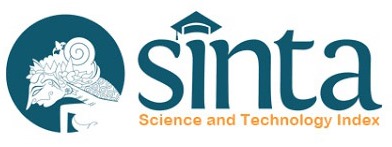Karakteristik Glukosamin Hidroklorida Hasil Hidrolisis Kitosan menggunakan Asam dan Ultrasonikasi
Abstract
Glukosamin adalah suatu bahan organik yang terlibat dalam struktur dan fungsi sendi termasuk glikolipid, glikoprotein, dan proteoglikan. Pengembangan metode produksi glukosamin diperlukan untuk memenuhi kebutuhan glukosamin sebagai suplemen sendi yang semakin tinggi. Penelitian ini bertujuan untuk mendapatkan metode produksi glukosamin hidroklorida yang menghasilkan rendemen tinggi dengan waktu produksi yang relatif singkat. Efek ultrasonikasi dan tanpa ultrasonikasi sebagai pretreatment pada hidrolisis asam ditentukan terlebih dahulu. Selanjutnya produksi glukosamin dilakukan dengan ultrasonikasi selama 30 dan 40 menit dan hidrolisis menggunakan asam hidroklorida (HCl) 37 %, dengan rasio 1:9 (b/v) pada suhu 60 dan 80 oC selama 90 menit. Hasil penelitian menunjukkan bahwa ultrasonikasi memberikan pengaruh nyata terhadap rendemen glukosamin hidroklorida. Ultrasonikasi selama 40 menit dan hidrolisis pada suhu 80 oC menghasilkan rendemen glukosamin tertinggi yaitu70,13±0,67%, kelarutan 96±0,02%, pH 4,1±0,17, Loss on Drying (LoD) 1,00±0,001%,dan Loss on Ignition (LoI) 0,23±0,05%. Spektrum FTIR glukosamin yang dhasilkan menunjukkan kemiripan dengan standar, dengan nilai derajat deasetilasi sebesar 98,58-99,82%.
Characteristics of Glucosamine Hydrochloride Produced from Hydrolysis of Chitosan Using Acid and Ultrasonication
Abstract
Glucosamine is an organic compound involving in structural and function of joints including glycolipids, glycoproteins, and proteoglycans. Development of glucosamine production is needed to meet the increasing of glucosamine demand as a joint supplement. The aim of this study was to acquire a method of glucosamine hydrochloride production which produced high yields with relatively short production time. Effect of ultrasonication and without ultrasonication was determined earlier. Furthermore, glucosamine production was carried out by ultrasonication pretreatment for 30 and 40 minutes and hydrolysis using 37% hydrochloric acid (HCl), with a ratio of 1:9 at 60 and 80 oC for 90 minutes. The result showed that ultrasonication gave a significant effect on the yield of glucosamine hydrochloride. The treatment of hydrolysis chitosan at 80 oC and 40 minutes ultrasonication time produced the highest yield of glucosamine hydrochloride, i.e. 70.13±0.67%, solubility of 96±0.02%, pH value of 4.1±0.17, LoD of 1.00±0.001%, and LoI of 0.23±0.05%. The glucosamine FTIR spectrum showed a similarity to the standard, with the degree of deacetylation of 98.58-99.82%.
Keywords
Full Text:
PDFDOI: https://doi.org/10.15578/jpbkp.v14i2.548
Refbacks
- There are currently no refbacks.
JPBKP adalah Jurnal Ilmiah yang terindeks :
ISSN : 1907-9133(print), ISSN : 2406-9264(online)
This work is licensed under a Creative Commons Attribution-NonCommercial-ShareAlike 4.0 International License.








